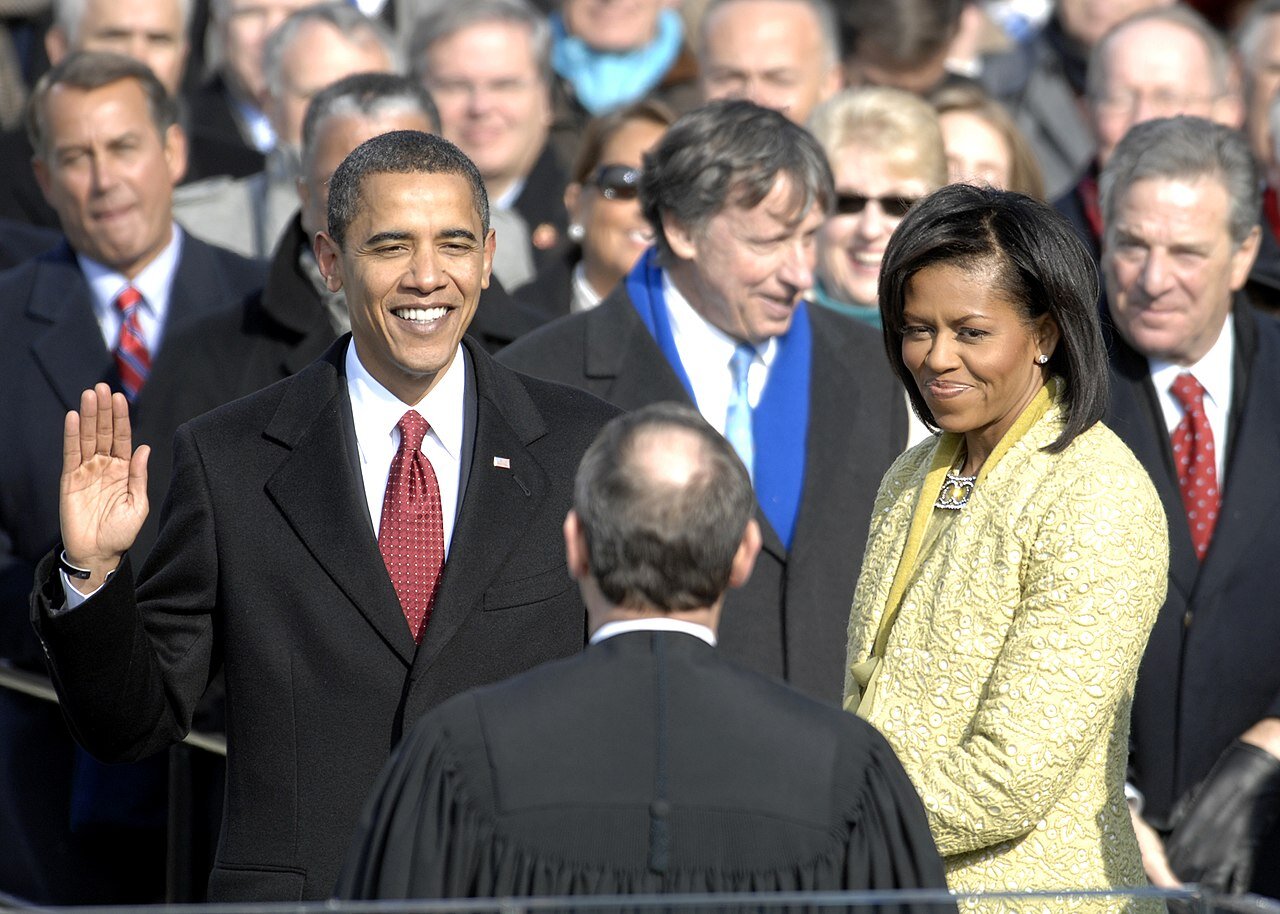20 January 2021
An inauguration is a formal or ceremonial start or consecration of something, particularly an induction into an office. In an American context, it is perhaps most famously used to refer to the ceremonial start of a presidential term of office, now held on 20 January the year following an election.
The word comes from the Latin verb inauguro, meaning to take omens from the flight of birds or more generally to divine something, and from inauguratio, meaning a consecration and in post-classical use a beginning. In ancient Rome it was the practice to take auguries before starting a major venture or installing an official.
The word does not, however, appear in English until the sixteenth century. John Hooper’s 1547 Detection of the Devils Sophistrie references the inauguration of Pope Leo V in July 903. Leo V’s papacy was short lived; he was deposed in February 904 and died shortly thereafter. But the passage is perhaps even more noteworthy for the story of one of Leo’s predecessors, Stephen VI. Stephen had put the rotting corpse of Pope Formosus on trial in 897. The corpse was found guilty, but the political outcry over the trial resulted in Stephen being deposed and strangled:
Stephene the sixt was byshope of Rome and for a priuate hattred he had unto his predecessour and benefactor fformosus abrogatid all the lawes and statutes that he made in the time of his being byshope, pluckyd the ded body out of his sepulchre, cut of too fingers of his right hand and cast them into the fflud Tyber. After the death of Stephene succedid Romanus primus, and after him too orher. Theodorus secundus, & Ioannes decimus. These thre disanullid all the decrees of Stephyne, and restoryd the actes and statutes of fformosus Sthephanes Ennymie. Alitle after was leo the ffyghe made byshope, and within xl. dayes of his inauguracion, is uery ffrend Christopher cast hym in to pryson.
Inauguration makes its appearance in an American political context in the Federalist 52, in reference to the start of a new governmental structure under the recently drafted constitution. As printed in the Independent Journal of 9 February 1788:
It is true that all these difficulties will by degrees be very much diminished. The most laborious task will be the proper inauguration of the government, and the primeval formation of the federal code.
And, appropriately, the first U.S. presidential inauguration was that of George Washington on 30 April 1789. Inauguration appears in print in this context in the Journal of the House of Representatives the following day:
The Speaker laid before the House a copy of the Speech of the President of the United States, to both Houses of Congress, delivered yesterday in the senate-chamber, immediately after his inauguration.
Following Washington’s first term, presidential terms were inaugurated on 4 March until 1933, when the twentieth amendment to the U.S. Constitution changed the date and time to noon, 20 January. The change was instituted to shorten the lame-duck period after the transition from the Hoover to the Franklin Roosevelt administration in the depths of the Great Depression when urgent action was needed and not forthcoming from the outgoing administration.
Sources:
Lewis, Charlton T. and Charles Short. A Latin Dictionary. Oxford: Clarendon Press, 1879, s.v. inauguro, inauguratio. Brepols: Database of Latin Dictionaries.
Dictionary of Medieval Latin from British Sources. Oxford: Oxford UP, 2013, s.v. inaugurare. Brepols: Database of Latin Dictionaries.
Hooper, John. Detection of the Devils Sophistrie. Zurich: Augustyne Fries, 1547. Early English Books Online (EEBO).
Journal of the House of Representatives, vol. 1: First Congress, First Session (1 May 1789). Martin P. Claussen, ed. Wilmington, Delaware: Michael Glazier, Inc., 1977, 29. HathiTrust Digital Archive.
Madison, James and Alexander Hamilton. “Federalist 52.” Independent Journal (New York), 9 February 1788, 2. NewsBank: America’s Historical Newspapers.
Oxford English Dictionary, second edition, 1989, s.v. inauguration, n., inaugur, v.
Photo Credit: Master Sgt. Cecilo Ricardo, U.S. Air Force, 20 January 2009, Department of Defense photo. Public domain image.

